Kelp forests represent one of the most vibrant and productive ecosystems in oceanic environments, supporting a wide array of marine life. Predominantly found in cooler waters along continental shelf edges, kelp serves as both habitat and a source of nourishment for various species. The primary consumers of kelp are marine herbivores which include invertebrates such as sea urchins and various mollusks, as well as fish species like the kelp perch.
These herbivores are not the only creatures that feed on kelp; the ecosystems are intricate and involve several trophic levels. In some cases, even larger predators indirectly rely on kelp by eating the herbivores that graze on these underwater plants. The balance of the kelp ecosystem can be significantly affected by changes in the population of kelp-eating species, whether due to natural predation or human influences.
Human activities have also left an imprint on kelp forests. Pollution, climate change, and overfishing can lead to imbalances, resulting in either the unchecked growth of kelp-eating species or a decline in kelp biomass. Conservation efforts aim to protect these crucial ecosystems by managing fishing practices, reducing pollution, and studying kelp forest dynamics.

Key Takeaways
- Kelp forests support diverse marine life with many species directly consuming kelp.
- Kelp biomass affects and is affected by the populations of marine herbivores and larger predators.
- Conservation strategies are essential to mitigate human impacts and preserve kelp ecosystems.
Kelp Ecosystems
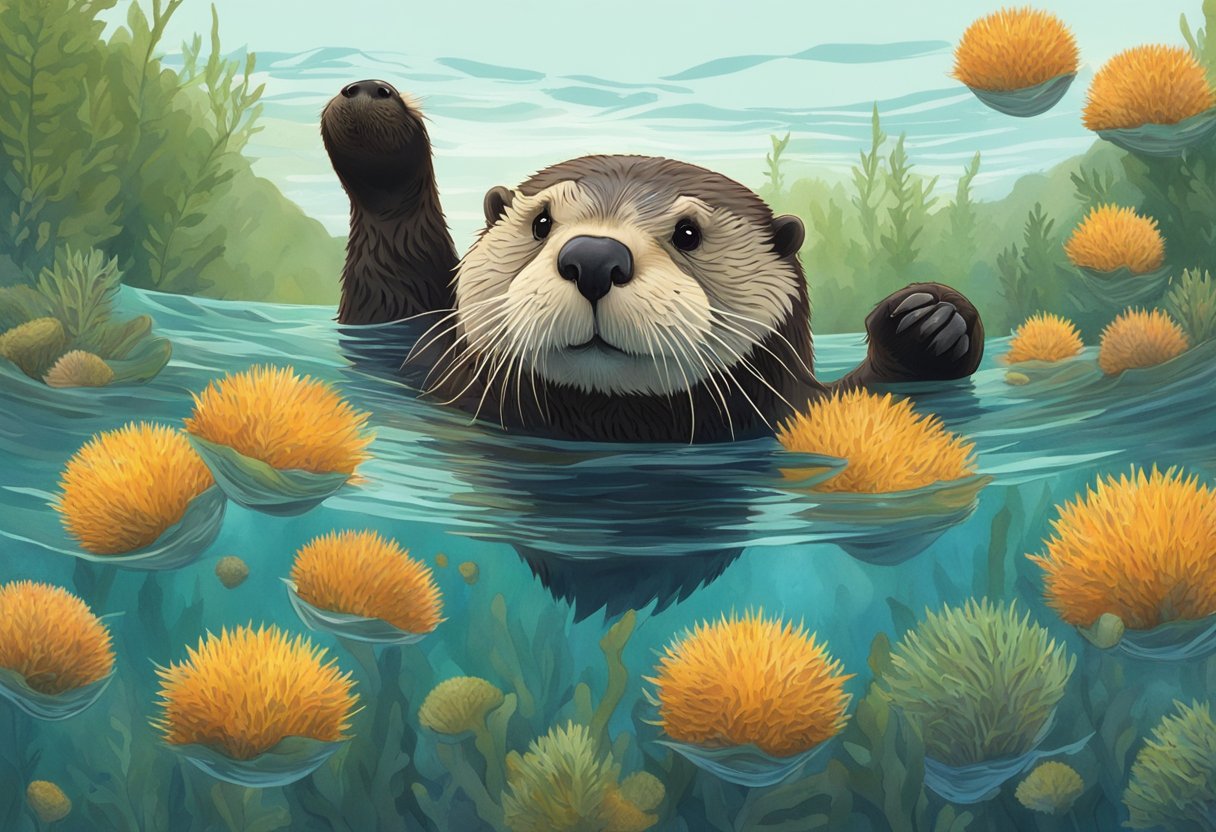
Kelp ecosystems are dynamic marine environments that support a diverse range of species, from tiny invertebrates to large marine mammals.
Importance of Kelp
Kelp, a type of large brown seaweed, is foundational to marine food webs. Primary consumers such as sea urchins and various invertebrates eat kelp directly. They, in turn, are prey for secondary consumers. In addition to providing food, kelp forests offer habitat and protection for many marine organisms. Fish species, for example, use these underwater forests to hide from predators and to hunt for smaller prey.
Kelp Forest Locations
Kelp forests are predominantly found in cold, nutrient-rich waters along the coasts of the Pacific Ocean, from Alaska and Canada down to the waters of Baja California. Other notable regions include parts of the Southern Ocean near Antarctica and the coasts of South Africa, New Zealand, and Australia. These locations are home to extensive kelp forests due to the availability of sunlight for photosynthesis and the presence of rocky substrates to which kelp can anchor.
| Consumers | Type of Consumer | Role in Kelp Forests |
|---|---|---|
| Sea Urchins | Primary | Consume kelp and help control kelp populations |
| Invertebrates | Primary | Feed on kelp and contribute to the ecosystem's biodiversity |
| Fish | Secondary | Rely on kelp forests for shelter and as hunting grounds |
| Marine Mammals | Tertiary | Predators that indirectly depend on kelp through their prey |
Marine Herbivores
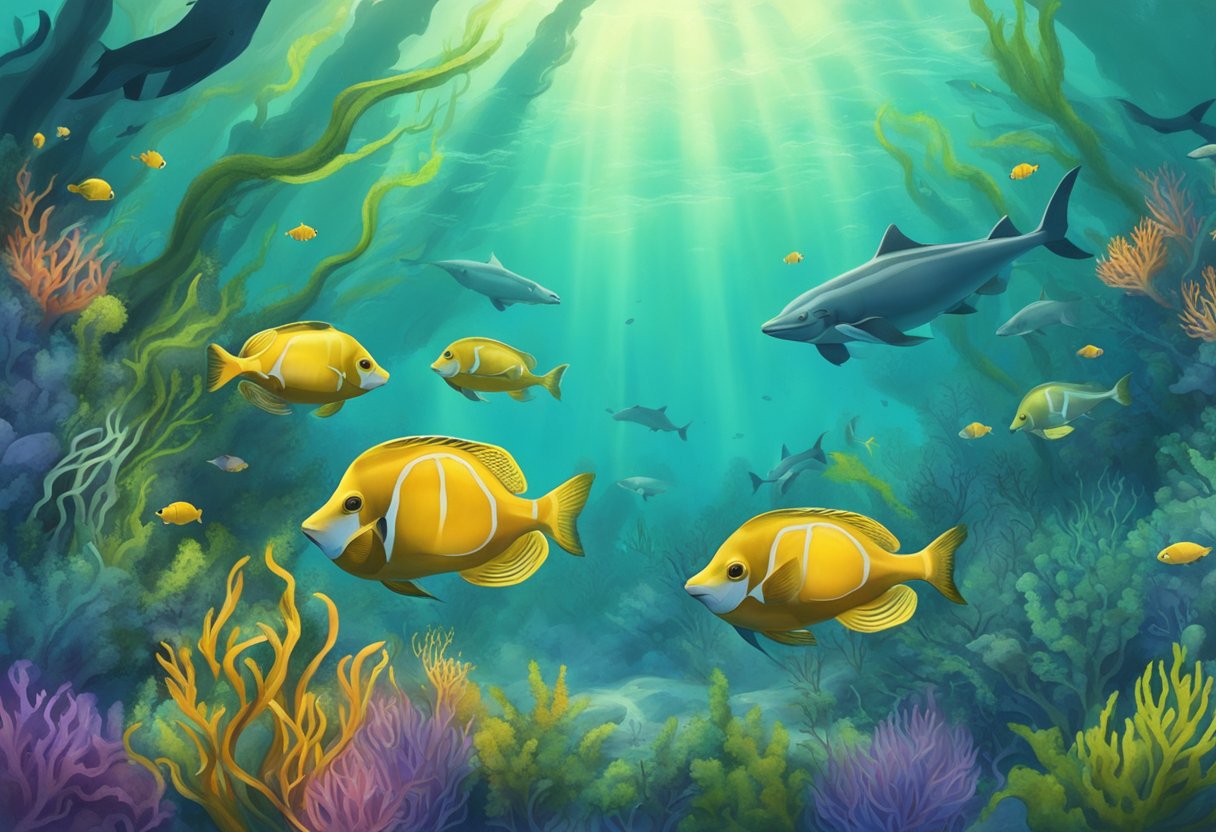
Marine herbivores play a crucial role in maintaining the balance of kelp forest ecosystems by consuming kelp as part of their diet.
Sea Urchins
Strongylocentrotus spp., commonly known as sea urchins, are among the primary consumers of kelp. They graze on kelp holdfasts and can rapidly denude kelp forests if their populations are unchecked.
Fish Species
Certain species of fish, like the opaleye (Girella nigricans) and halfmoon (Medialuna californiensis), have adapted to feed on kelp. They typically nibble on the kelp's blades and may also consume the algal spores.
Invertebrates
In addition to sea urchins and fish, several invertebrates, such as kelp snails and various crustaceans, feed on kelp. These creatures often target the kelp's surface, scraping off microalgae and consuming detached kelp tissue.
Kelp's Predators and Threats
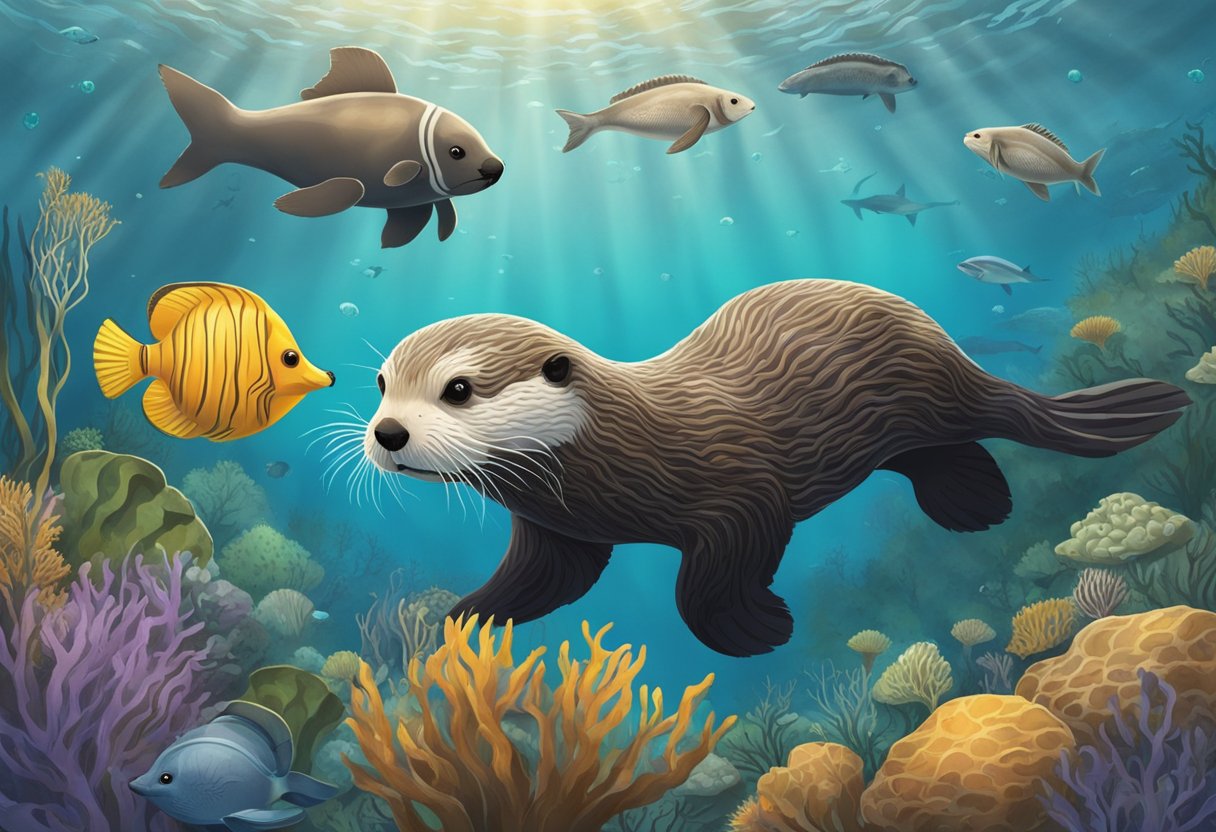
Kelp forests serve as a vital habitat and food source for diverse marine life. Within this ecosystem, certain mammals and birds play crucial roles as consumers of kelp, influencing both the health and distribution of these underwater forests.
Mammalian Consumers
Sea Urchins:
- Primary Consumers: Sea urchins are among the most significant consumers of kelp. They graze on kelp holdfasts and can decimate kelp beds if their populations are unchecked by predators.
Fish Species:
- Selective Feeders: Several types of fish, including some species of rockfish, consume young kelp plants and can influence the composition of kelp communities.
Bird Species
Herbivorous Waterfowl:
- Diet: Ducks and geese selectively feed on kelp during their migrations, often consuming substantial amounts of certain kelp species.
Coastal Birds:
- Impact: While not primarily kelp eaters, some coastal birds may indirectly affect kelp by preying on smaller organisms that live within the kelp forest canopy, altering the ecosystem's dynamics.
Human Impact on Kelp Forests
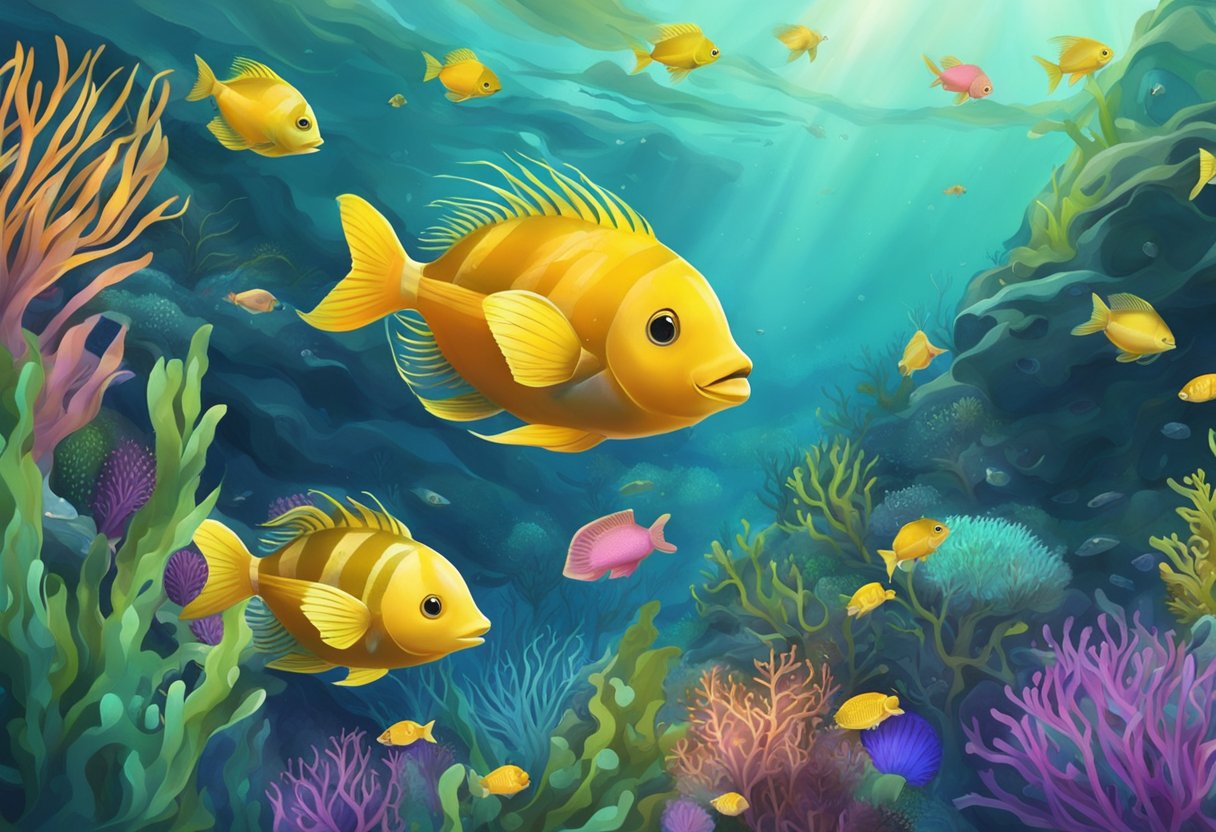
Human activities have significant effects on kelp forest ecosystems, notably through the pressures applied by the fishing industry and the broader impacts of climate change.
Fishing Industry
The fishing industry directly influences kelp forests in several ways. Overfishing depletes key species that help maintain the ecological balance within kelp ecosystems. For instance, sea otters, which feed on sea urchins, are often caught in fishing gear. Without sea otters to keep their populations in check, sea urchins can overgraze on kelp, leading to deforestation. Furthermore, fishing gear can physically damage kelp fronds and holdfasts, hindering kelp growth and reproduction.
- Primary Concerns:
- Bycatch of kelp forest regulators like sea otters.
- Physical damage to kelp structures from fishing gear.
Climate Change Effects
Climate change poses a multifaceted threat to kelp forests. Elevated sea temperatures can stress kelp, hamper their growth, or even lead to die-offs. Ocean acidification, a result of increased CO2 absorption, also weakens kelp by affecting calcium carbonate levels which are crucial for the structural strength of kelp. In addition, climate change alters ocean currents, which can reduce the availability of the nutrients kelp need to thrive.
- Key Climate Change Impacts:
- Increased sea temperatures and occurrences of marine heatwaves.
- Ocean acidification disrupting kelp's structural integrity.
- Changes in nutrient flows due to altered ocean currents.
Conservation Efforts
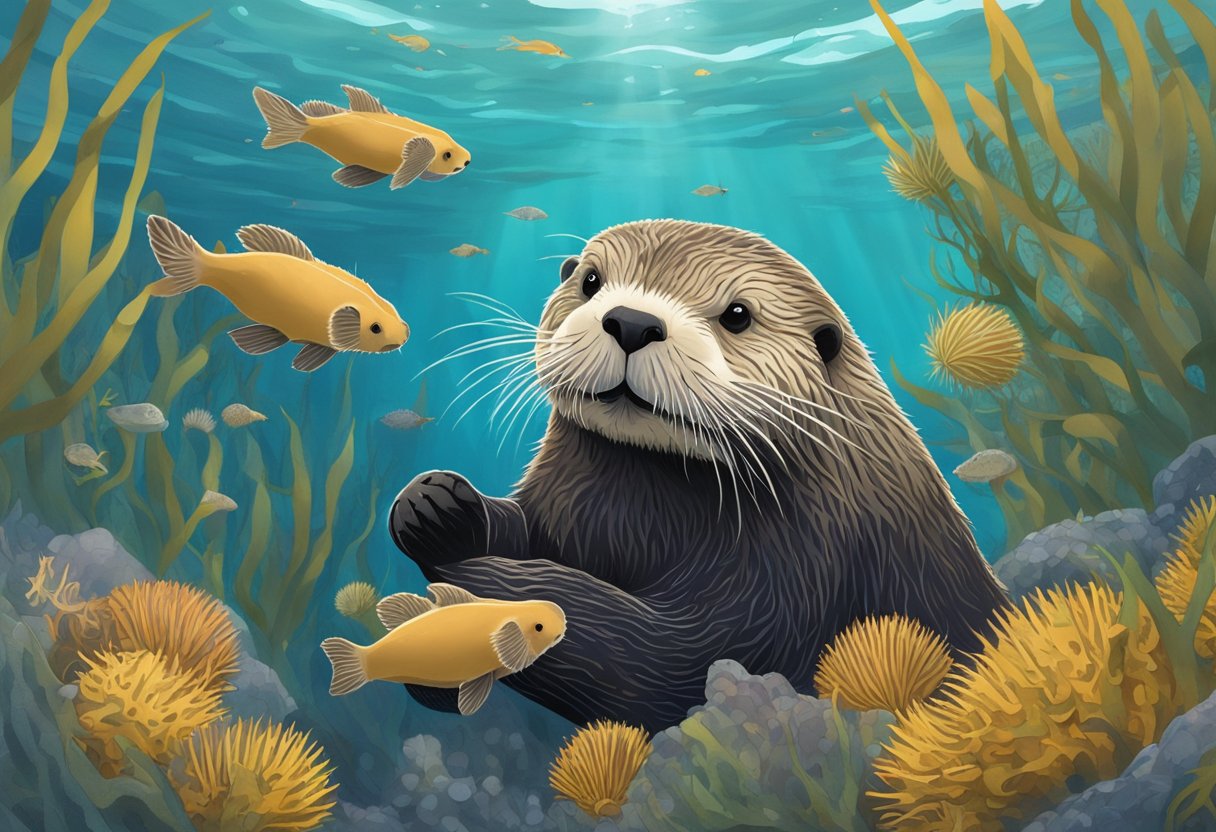
Efficient conservation efforts are crucial for preserving kelp ecosystems and the species that depend on them. These efforts mainly manifest through the establishment of protected areas and the initiation of restoration projects, which are vital for mitigating adverse environmental impacts.
Protected Areas
Protected areas play a pivotal role in kelp conservation. They restrict certain human activities, such as commercial fishing and coastal development, to prevent habitat destruction. In California, the Point Reyes State Marine Reserve and Big Creek State Marine Reserve are two notable examples where kelp forest protection measures have been enacted.
- Point Reyes State Marine Reserve: No-take zone, where all fishing is prohibited.
- Big Creek State Marine Reserve: Limited-take zone, with strict regulations on species that can be harvested and methods used.
Restoration Projects
Restoration projects aim to rejuvenate damaged kelp forests and foster their recovery. An example is the Kelp Restoration Project in Tasmania, where large-scale reseeding efforts are underway to combat the loss of kelp due to climate change and sea urchin infestation.
-
Kelp Restoration Project:
- Location: Tasmania's coast
- Approaches: Reseeding and urchin culling
- Goal: Restore giant kelp ecosystems
Frequently Asked Questions
The FAQs address common curiosities about the dietary habits within kelp ecosystems, focusing on the various species that consume kelp and the ecological dynamics of these marine forests.
Which marine species are the primary consumers of kelp in their habitat?
Among the primary consumers of kelp are sea urchins, which play a significant role in controlling the kelp population. Various species of mollusks and crustaceans also feed on kelp as a major part of their diet.
What predators can be typically found in kelp forests hunting for kelp?
In kelp forests, it's not the predators that hunt for kelp, but rather for the herbivores that consume the kelp. Predators such as sea otters target sea urchins and help maintain the balance within the ecosystem.
In what ways does the presence of kelp affect the diet of fish living within kelp forests?
Kelp serves as both habitat and food source for fish species. Smaller fish feed on the algae and detritus from kelp, while larger fish hunt for these herbivores among the kelp strands.
How do kelp forests fit into the broader marine food web?
Kelp forests are foundational to the marine food web. They provide shelter and food for a multitude of organisms, from invertebrates to fish, which in turn are prey for larger predators, linking kelp to almost every level of the food web.
Can you list some of the key animals that rely on kelp as a food source in the Pacific Ocean?
Animals such as the Pacific sea urchin and the Northern kelp crab rely heavily on kelp. Additionally, the black abalone is another species for which kelp is a significant part of its diet in the Pacific Ocean.
What role do herbivorous creatures play in the ecosystem of kelp forests?
Herbivores like sea urchins and certain fish species help to regulate kelp growth and prevent overpopulation. Their grazing activities are crucial for maintaining kelp forest health and diversity.




